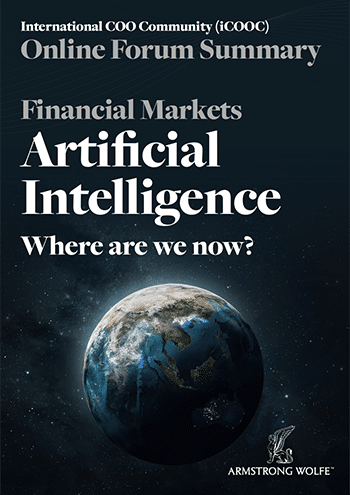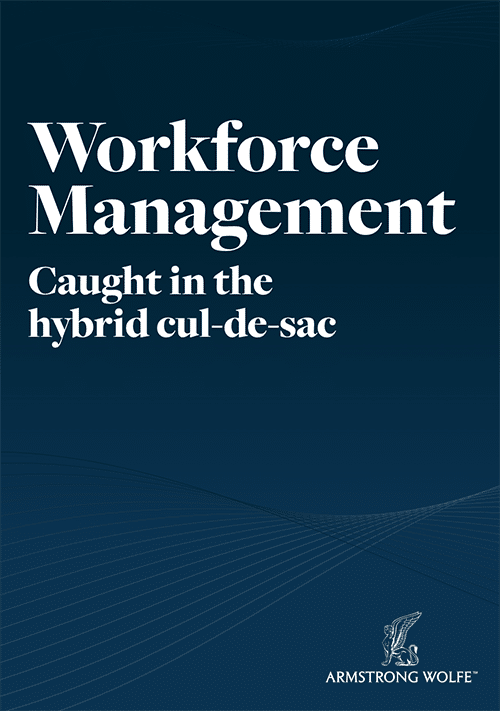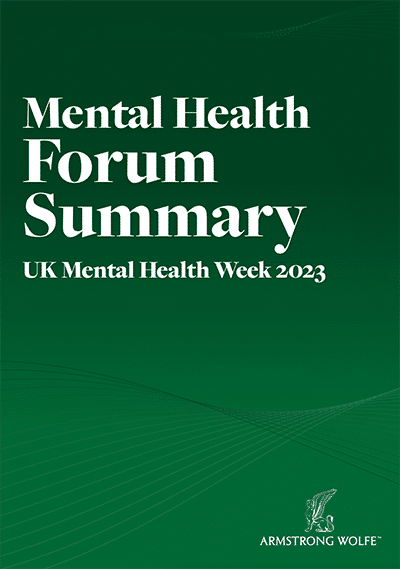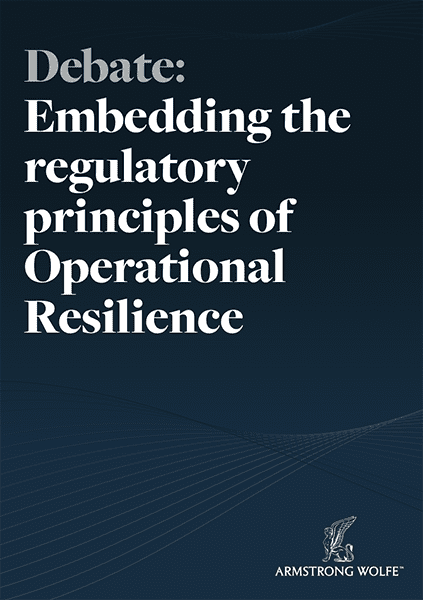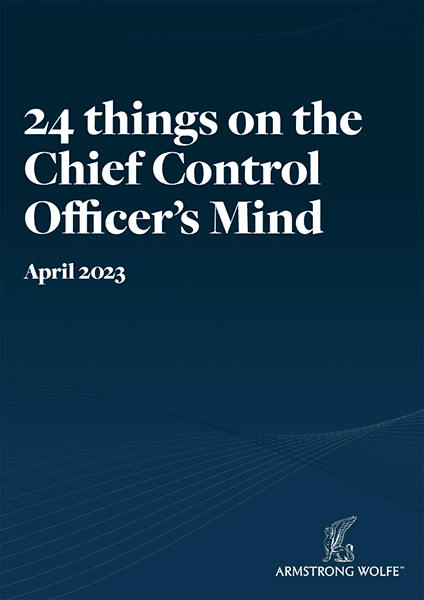COO Asset Management RTO Virtual Roundtable
Abridged minutes drawn from the Chatham House Rule COO discussion – 6 May 2021
15 companies attended the asset management COO call to discuss challenges and decisions facing the industry as it prepares for a redeployment of staff and a return to the office (RTO).
Abridged Minutes
With June 2021 being a month in the US and UK where the successful rollout of a vaccination programme is leading to governmental policies decreeing and/or indicating a RTO is acceptable, asset managers are now compelled to move from the theoretical to affirmative action and policy setting for their staff.
The focus of the debate was two-fold:
-When to return to work and in what context?
-What does a hybrid model look like, and how best to meet anticipated challenges?
The debate on the when and how of managing the RTO programme was best summarised by one COO when stating: “Our working assumption is we will use June–September to gently encourage staff to return and will likely implement social distancing measures [and other related policies] even if not mandated by government.” This delay in the acceleration in the RTO process until September being aligned to several influencing factors, specifically to allow a test and try period and to take into consideration June through August is the annual vacation period, with September being a return to school and a new academic year for many families.
There was also an acknowledgement that we had played witness to several false horizons in the last 12 months (regarding RTO) and that a staggered approach would allow time for certainty to be secured as to the effectiveness of the vaccination programme and/or its ability to be effective against new variants. The age-old adage of less haste more speed summarised the spirit of the conversation.
It was also clear, however, that many challenges and decisions were yet to be made in policy- making to define what individual hybrid working models look like in practice? A COO summarised the key questions he was facing, echoed by others:
-How do people see the permanent hybrid working model operating, i.e. the model where staff have the option to WFH some or all of the time?
-How do we see managers managing their hybrid working model staff, particularly with regards to performance management, career progression, succession planning, and career development?
-How do we see managers managing their hybrid working model teams and functions, particularly with regards to controls & procedures, training, and continuous improvement?
-How do we maintain company culture when a significant portion of staff are WFH some or all the time?
The discussion focused initially on workplace optionality, questioning whether to allow any, a few, some, or most full-time WFH as an option. Additionally, under what criteria would this be set and how would it be managed. An added complexity was noted for those asset managers that were part of a larger banking group and whether they were going to have any flexibility and/or freedom of movement from the policies being adopted, for example, within Markets (where supervision and regulatory demands make full optionality unlikely if not unfeasible for some revenue generating and in-business support roles).
Snippets of the discussion cited examples of challenges being faced by the COO with staff who have moved state, province and in some cases country, and who were now set on staying put. This made more so challenging when some of those adopting this stance are in senior leadership roles, setting a precedent that is very difficult not to apply to all without a significant cultural impact.
Exceptions were noted for some roles that could be allocated as 100% WHF, such as technology. Here it was remarked this was needed to maintain a competitive position in the technology market when seeking to hire or retain talent, not so much from industry peers, but as other industries have well established WFH policies and optionality for their technology employees.
Most participants are leading their businesses towards a working model that allows some stated WFH policy and/or embraces a change in policy and culture as to managerial authority/autonomy by offering flexibility to staff on WFH. WFH weighting and/or target quota would appear to have a majority with the office as the main point of work, being required in the office three to four days a week. One company noted a communicated policy that WFH was available to all staff Mondays and Fridays, but compulsory attendance in the office Tuesday through Thursday would be required. The COO commented: “We see WFH days as being heads down days to get work done, for individual focus and days in the office to allow focus on collaboration and coordination.” There were exceptions noted but the direction of travel appears to be a 3:2 or 4:1 office to WFH balance.
Employee contractual status, for those now working in different states, provinces and countries, is a problem most companies are working their way through methodically. “Our first task was to establish where all our staff were actually located, then to work our way through each to confirm their legal position and thereafter to establish their preference (WFH v RTO),” one global COO remarked. They are navigating their way through this process presently, “learning and defining policy in parallel”.
Issues arising and not yet wholly resolved vary from role to role and location to location. Regulatory and tax implications and possible issues arising from commuting demands (be this weekly, monthly or other) are largely understood but have not yet been embedded in policy. The crux will come soon when some staff, playing hard ball, will be faced with a company RTO-WFH policy that may not fully meet their expectations. It is anticipated limited staff turnover due to such policy-making is inevitable.
Within the heady and speculative days of the last 12 months some have talked of the end of the office as the hub for employee activity and interactions. Such assertions are being reeled in by a pragmatic and logical approach, where the assessment as to what is best for the business and its people has moved increasingly to a RTO operating model. Why? In recent weeks there has been a creeping appreciation, recognition and willingness to attribute qualitative value to the interactions, spontaneity and face-to-face chemistry that drives idea generation and combustion [between staff]. Conversely, it is also clear, with very few exceptions, that the industry is not going back to the future, one attendee noting: “Structural change to workforce management and practices will be made and irrevocably so post-pandemic.”
Any company that opts for 100% RTO will leave itself open to some staff attrition, where their employees may justifiably feel their trust (earnt in the last 12 months) has been betrayed. Alternately or perhaps additionally, a mixed WFH-RTO rotation option may simply best fit their needs and capabilities and this mix is something they do not wish to give up. It is also questionable whether any company committed to 100% RTO will have open access to competitor’s staff when seeking to hire external talent. In this case they would be required to give up their RTO-WFH option (and benefit) to join them. It is a brave call for any company, however strong their market position and however attractive their culture, to adopt this steadfast, no change approach and/or to merely give it lip service.
Two operational points were addressed at close:
-Wearing of face masks: present policy amongst almost all is ‘to wear when in motion’, not when seated.
-Whether to encourage/require the vaccine and how to apply a policy around the globe? ‘Encourage but not to dictate’ was the chorus from around the table. Staff refusing to have a vaccine could not be made to have one and/or it was anticipated (allowing for local vaccination data to enable a RTO), that this would not become a significant issue. It was further noted, however, that new employees could have a mandatory requirement to have been vaccinated placed in their contract.
Following a cross-table request for a further RTO COO call, 20 May 2021 has been set to discuss:
-Improving productivity in a new working environment – 15th June, supported by EY
-Cultural cohesion, the role of leadership at all levels and training – 20 May (AW Workforce Planning Practice)
-Workforce optimisation and imaging the workplace of tomorrow
* The practice in the UK’s Armed Forces of devolving responsibility down to low levels of command is known as Mission Command. The commander’s intent is shared with subordinates, who are told what to achieve and why, but are then left to decide how to achieve it.
For more information and/or to comment on the above, contact: Armstrong Wolfe’s, Charlotte Marklove ()



